A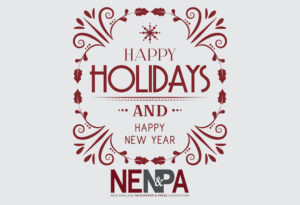 s we close out the year, the staff and Board of Directors of the New England Newspaper & Press Association extend our warmest wishes to you and your families for a joyful holiday season and a peaceful, healthy, and hopeful New Year.
s we close out the year, the staff and Board of Directors of the New England Newspaper & Press Association extend our warmest wishes to you and your families for a joyful holiday season and a peaceful, healthy, and hopeful New Year.
This has been another year marked by both challenge and resilience for journalism and the media. At a time when the work of local news is too often questioned, criticized, or under fire, we are continually inspired by the journalists, editors, publishers, photographers, designers, students, and newsroom professionals across New England who show up every day with integrity, courage, and a deep commitment to public service. Your work matters. Your voices matter. And your role in strengthening informed, connected communities has never been more essential.
Even in uncertain times, we remain optimistic about the future of local journalism—because of you. The creativity, collaboration, and dedication we see across our region give us reason for hope, and we are proud to stand with you as an advocate, partner, and supporter of your work.
Please note that the NENPA office will be closed on December 25 and 26, as well as January 1. Our weekly eBulletin will take a brief holiday break and will return on Friday, January 9, with industry news, resources, training opportunities, and updates from across the region.
We are deeply grateful for your continued engagement, support, and trust. It is truly a privilege to represent and serve the daily, weekly, specialty, and online news organizations that make up New England’s vibrant local news ecosystem.
We wish you time to rest, reflect, and recharge during the holiday season, and we look forward to working alongside you in the year ahead—continuing to support strong, independent journalism and to gather, learn, and celebrate together in the months to come.
Warmest regards,
The NENPA Team

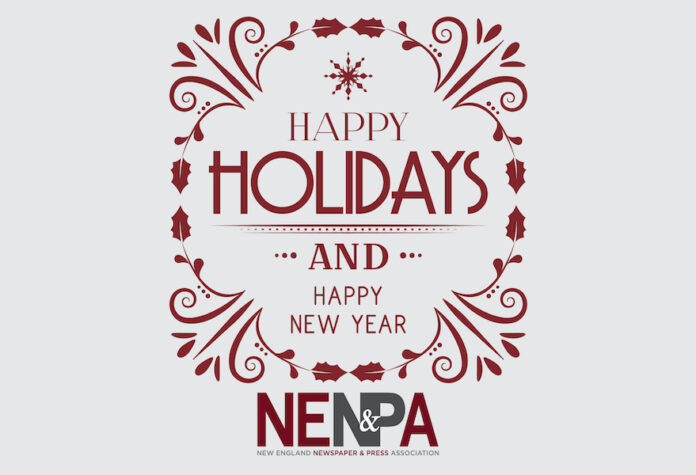

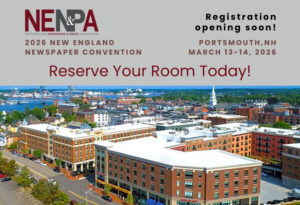 Planning to attend the
Planning to attend the 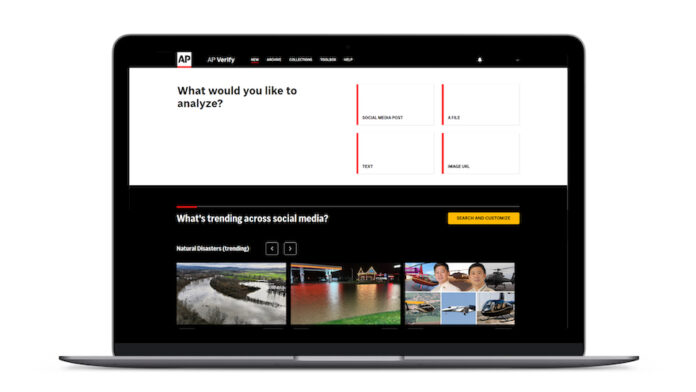
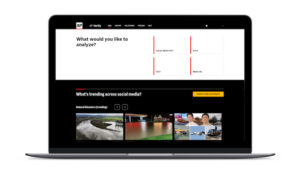 The Associated Press introduced
The Associated Press introduced 
 The Boston Globe announced that Brian McGrory will rejoin the organization as editor, effective January 5, 2026.
The Boston Globe announced that Brian McGrory will rejoin the organization as editor, effective January 5, 2026.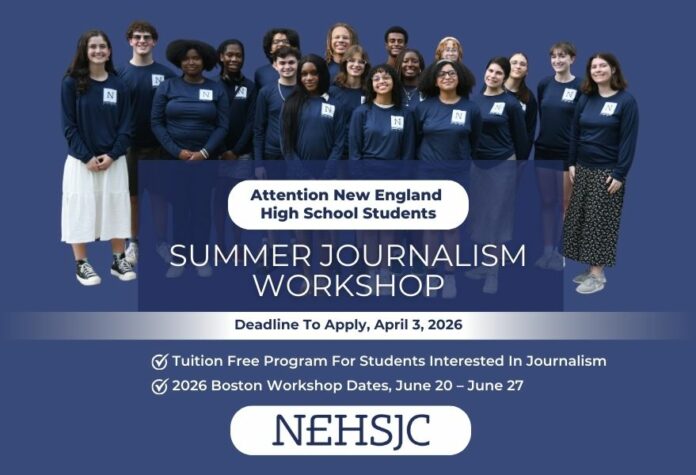
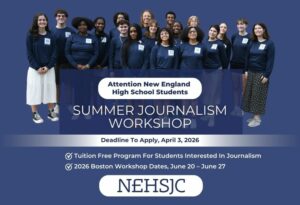 The
The 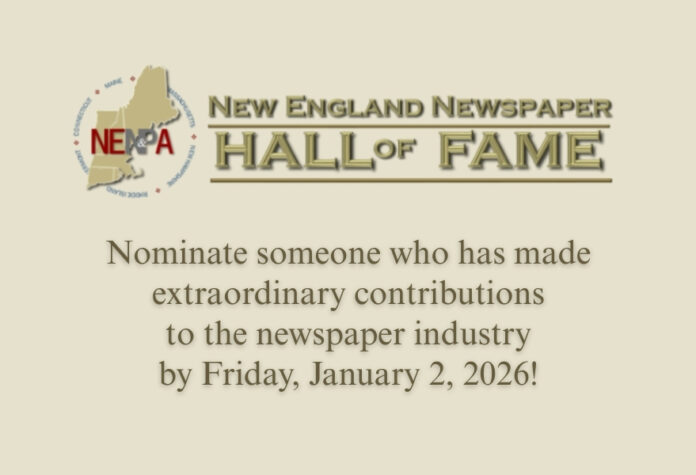
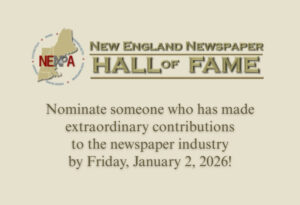 We’ve heard from several of you that you could use a little more time to prepare your nomination materials for the New England Newspaper Hall of Fame award, which recognizes the most outstanding newspaper professionals from across our six New England states.
We’ve heard from several of you that you could use a little more time to prepare your nomination materials for the New England Newspaper Hall of Fame award, which recognizes the most outstanding newspaper professionals from across our six New England states.
 The Poynter Institute has partnered with Internet Archive and Investigative Reporters and Editors (IRE) to bring preservation and web archive training to 300 news organizations throughout 2026 and 2027, with ‘Today’s News for Tomorrow,’ a project to help newsrooms preserve their digital footprint.
The Poynter Institute has partnered with Internet Archive and Investigative Reporters and Editors (IRE) to bring preservation and web archive training to 300 news organizations throughout 2026 and 2027, with ‘Today’s News for Tomorrow,’ a project to help newsrooms preserve their digital footprint.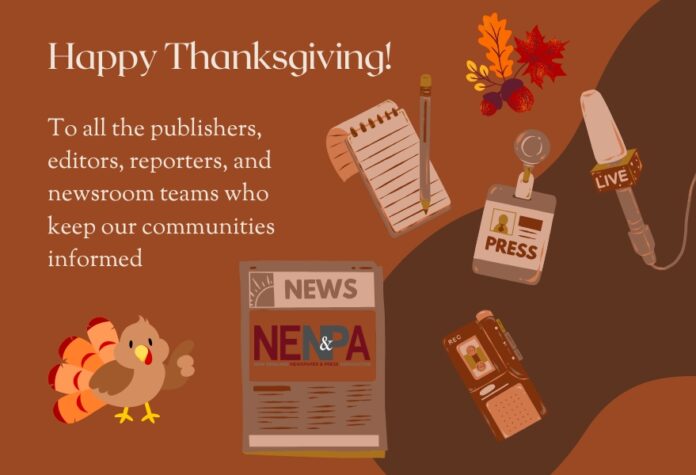
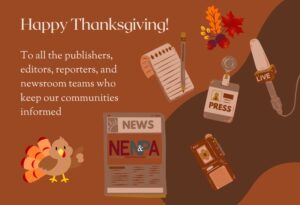 As we gather with friends, family, and those who bring meaning to our lives, all of us at the New England Newspaper & Press Association want to take a moment to extend our heartfelt thanks to you, the journalists, editors, publishers, photographers, designers, students, and newsroom professionals who keep our communities informed, engaged, and connected.
As we gather with friends, family, and those who bring meaning to our lives, all of us at the New England Newspaper & Press Association want to take a moment to extend our heartfelt thanks to you, the journalists, editors, publishers, photographers, designers, students, and newsroom professionals who keep our communities informed, engaged, and connected.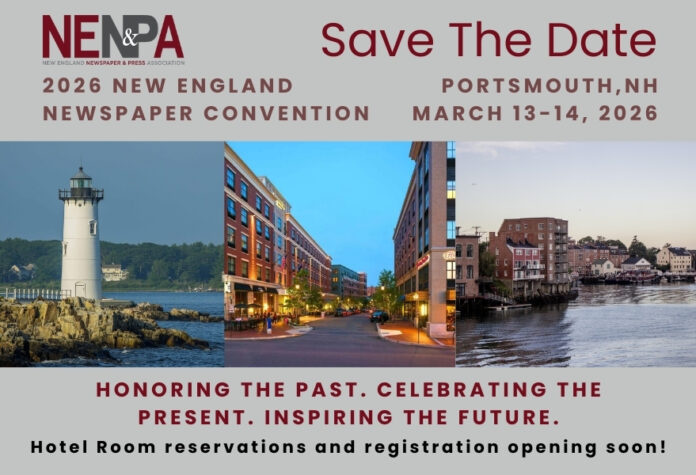
 The New England Newspaper & Press Association is excited to announce that the
The New England Newspaper & Press Association is excited to announce that the 
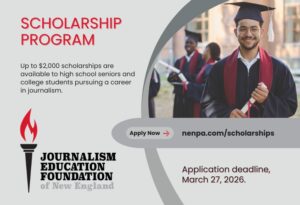 The Journalism Education Foundation of New England (JEFNE) is once again opening the door for the next generation of reporters, editors, photographers, and multimedia storytellers. Applications are now being accepted for the 2026 New England Journalism Scholarship Program, offering scholarships of up to $2,000 to outstanding student journalists across the region.
The Journalism Education Foundation of New England (JEFNE) is once again opening the door for the next generation of reporters, editors, photographers, and multimedia storytellers. Applications are now being accepted for the 2026 New England Journalism Scholarship Program, offering scholarships of up to $2,000 to outstanding student journalists across the region.